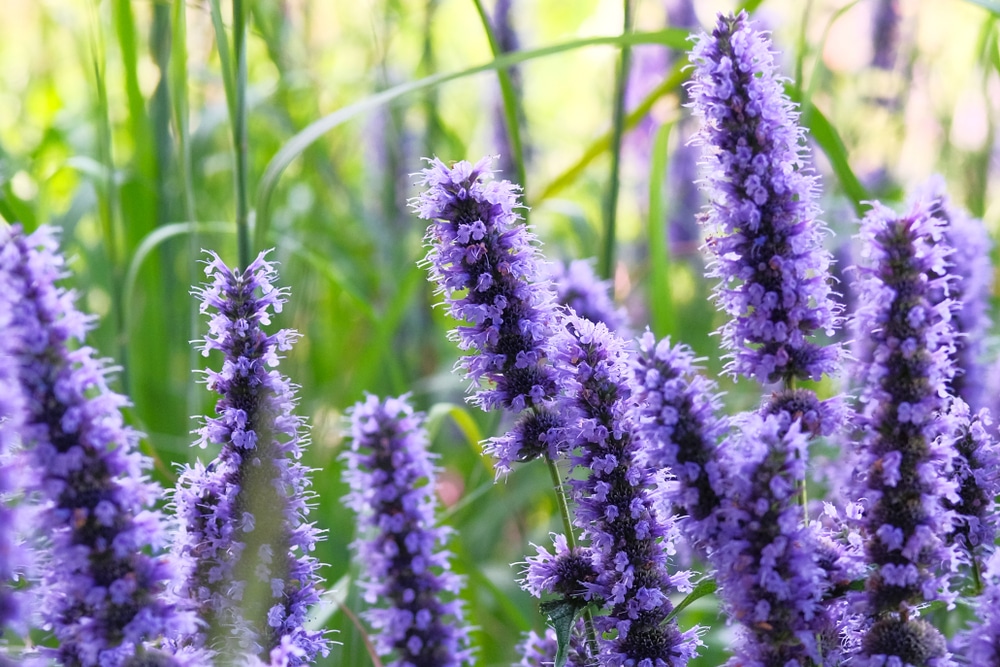
Hyssop is a well-known flowering plant that’s native to southern Europe and has great health benefits. It is basically an aromatic herb as it has a strong flavor and has lavender and rosemary hints. For the longest time, it has been used as a flavoring agent in stuffing and soups, but it’s also used in liqueur distillation. However, since it’s native to southern Europe, it’s hard to find it in other parts of the world, which is why we have the substitutes listed down in this article!
Hyssop Substitutes
- Lavender
Just like hyssop, lavender belongs to the mint family, which is why it has a mint undertone. It has a floral flavor profile as well, and its aroma is widely compared to lemon as well. It has exceptional floral quality, which is why it can be used in savory as well as sweet recipes. In addition, lavender can be added to infusions and to prepare soothing teas. It has a light purple hue, which matches the bright blue appearance of the hyssop flowers. All in all, you can use the 1:1 substitution ratio!
- Sage
Sage is another herb that you can use in place of hyssop in your recipes. It belongs to Lamiaceae family, which is basically mint. It doesn’t have a physical resemblance, but the flavor profile is quite similar. To illustrate, it has a strong minty flavor, which is why it’s used in savory recipes or recipes that have fatty meat in them. Fresh sage is easily available in grocery stores, particularly in the produce section. On the other hand, dried sage can be purchased from the spice aisle. Keep in mind that its flavor will be too strong when it’s used in the raw form, which is why it should be added to cooking recipes. Also, the raw sage has a cotton-like texture, which doesn’t look or feel well.
- Mint
Mint is one of the best alternatives that you can try, but it should be added in a pinch. To be honest, it has the cooling effect of eucalyptus, while the herbal freshness adds significant flavor to the food. The best thing about mint is that it’s suitable for desserts as well as vegetable and meat-based recipes. In addition, it can be used as a tea herb and is easily accessible. The only downside of using mint is that it doesn’t have the complex flavor of hyssop, especially the floral notes. In addition, the flavor is less pungent, so you’ve to add 2x more mint!
- Marjoram
Marjoram is known to have a mild flavor and a hint of sweetness. For this reason, it can be used as a substitute for hyssop and still won’t change the flavor of the dish – it won’t overpower your dish’s flavor. It is recommended that you start with a 1:1 substitution ratio and add more marjoram according to the flavor requirements. However, it won’t be too easy to find, but you might find it at a specialty spice store!
- Thyme
Thyme is one of the members of the mint family and is known to have a similar earthy flavor. For this reason, it can be added to salad dressings, potatoes, and beans for seasoning. You can opt for dried as well as fresh thyme to replace hyssop, but culinary experts recommend using fresh thyme.
- Basil
It has a very distinct flavor and is widely used in Italian cuisine. For this reason, if you are cooking something Italian and need to replace hyssop, you can opt for basil. In addition to Italian recipes, you can use basil in Mediterranean recipes. This is one of the easiest substitutes you can try, and you can opt for a dried or fresh version, depending on the recipe. However, it’s recommended that you add basil to the recipes that involve cooking because its flavor becomes pronounced as it cooks slowly.
For this reason, you can use basil to improve the flavor of sauces and soups, as these recipes include simmering. You can use the leaves in a 1:1 substitution ratio, but you can always add more if the recipe demands. Last but not least, it’s recommended that you remove the whole leaves before serving because they don’t taste well.